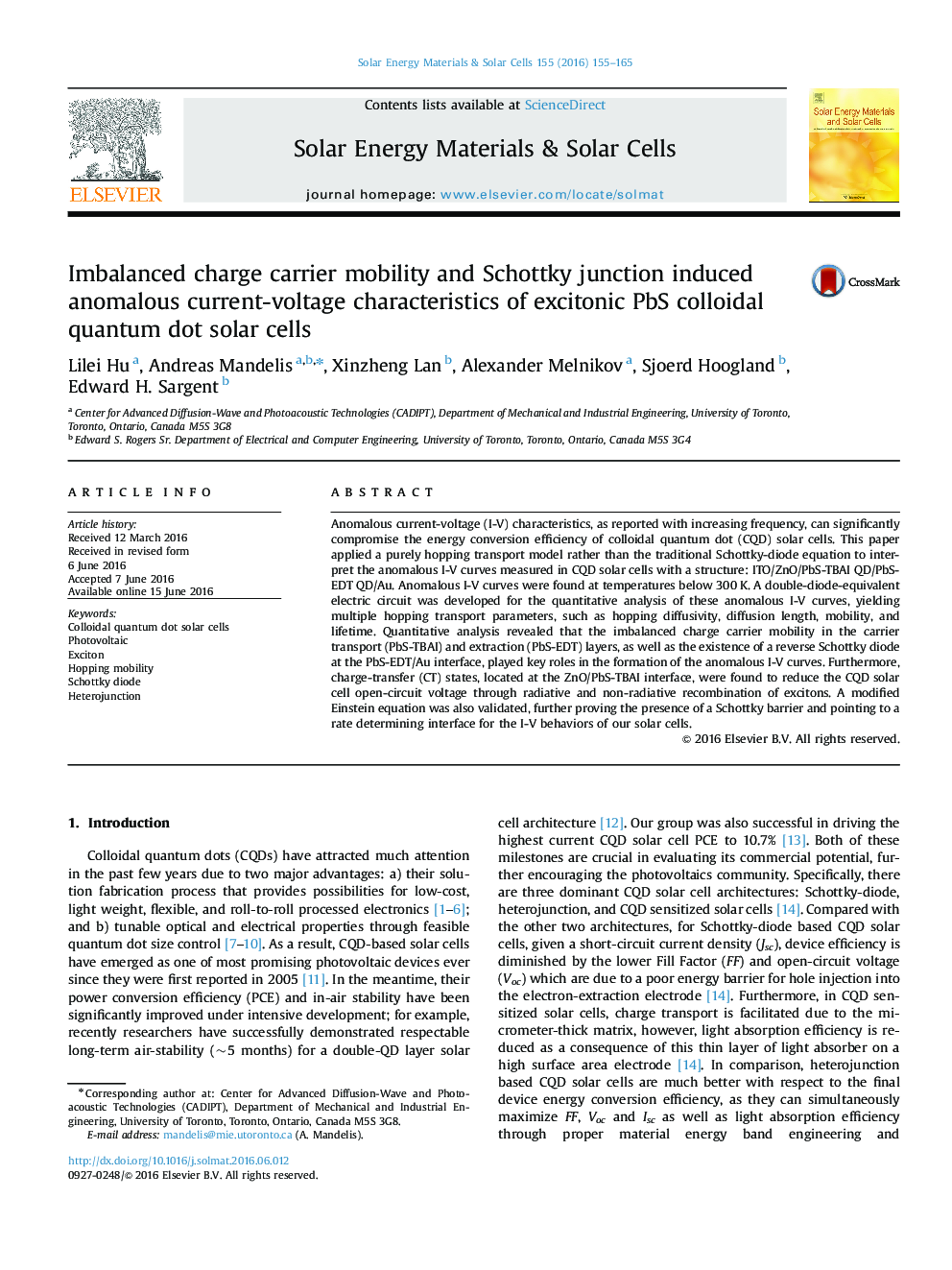| کد مقاله | کد نشریه | سال انتشار | مقاله انگلیسی | نسخه تمام متن |
|---|---|---|---|---|
| 77501 | 49283 | 2016 | 11 صفحه PDF | دانلود رایگان |
• Anomalous I-V curves were found in a colloidal quantum dot solar cell.
• A hopping charge carrier transport mechanism and a double-diode model were developed.
• A novel Einstein relation valid for hopping transport was introduced and validated
• Imbalanced hole mobilities and Schottky diode contribute to anomalous I-V curves.
• Open-circuit voltage is limited by charge-transfer states at the heterojunction.
Anomalous current-voltage (I-V) characteristics, as reported with increasing frequency, can significantly compromise the energy conversion efficiency of colloidal quantum dot (CQD) solar cells. This paper applied a purely hopping transport model rather than the traditional Schottky-diode equation to interpret the anomalous I-V curves measured in CQD solar cells with a structure: ITO/ZnO/PbS-TBAI QD/PbS-EDT QD/Au. Anomalous I-V curves were found at temperatures below 300 K. A double-diode-equivalent electric circuit was developed for the quantitative analysis of these anomalous I-V curves, yielding multiple hopping transport parameters, such as hopping diffusivity, diffusion length, mobility, and lifetime. Quantitative analysis revealed that the imbalanced charge carrier mobility in the carrier transport (PbS-TBAI) and extraction (PbS-EDT) layers, as well as the existence of a reverse Schottky diode at the PbS-EDT/Au interface, played key roles in the formation of the anomalous I-V curves. Furthermore, charge-transfer (CT) states, located at the ZnO/PbS-TBAI interface, were found to reduce the CQD solar cell open-circuit voltage through radiative and non-radiative recombination of excitons. A modified Einstein equation was also validated, further proving the presence of a Schottky barrier and pointing to a rate determining interface for the I-V behaviors of our solar cells.
Figure optionsDownload as PowerPoint slide
Journal: Solar Energy Materials and Solar Cells - Volume 155, October 2016, Pages 155–165
